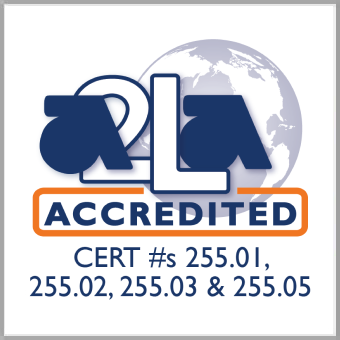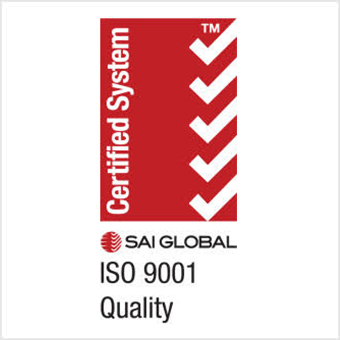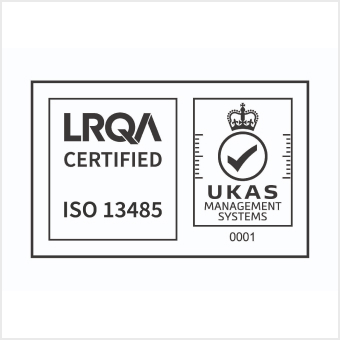Standard Test Method for Anions in Water by Suppressed Ion Chromatography
Introduction The Standard Test Method for Anions in Water by Suppressed Ion Chromatography (IC) is designed to provide a reliable, accurate, and efficient method for determining the concentration of anions in water samples. The method employs ion chromatography with a suppressed conductivity detector, which is widely used in environmental, industrial, and regulatory testing to measure concentrations of various anions, such as chloride, sulfate, nitrate, phosphate, and others, in water.
This method is particularly valuable for applications where precise and sensitive measurement of low concentrations of ions is required. It is effective in a variety of water matrices, including drinking water, wastewater, surface water, and groundwater.
Principle of Ion Chromatography Ion chromatography is a separation technique based on the interactions between ions in a sample and a stationary phase, typically a resin in a column, and a mobile phase (eluent) that flows through the column. The anions in the sample are separated based on their affinity for the resin and their differential interaction with the mobile phase.
The suppressed ion chromatography (SIC) variant of this technique uses a suppression device to reduce the background conductivity of the eluent, allowing for more sensitive detection of ions. The suppression process reduces the effect of the eluent’s ionic conductivity, which could otherwise interfere with the measurement of the analytes.
Test Method Overview The standard method involves several key steps:
- Sample Collection and Preparation: Water samples are typically filtered and sometimes diluted to ensure they fall within the calibration range of the chromatograph.
- Column Separation: A suitable ion exchange column is chosen for the separation of anions. The sample is injected into the system, where it interacts with the stationary phase and elutes based on the specific ionic properties.
- Suppression: After elution, the sample passes through a suppressor, which reduces the conductivity of the eluent, enhancing the sensitivity of detection.
- Detection: A conductivity detector measures the conductivity of the eluent as the anions elute. Each anion creates a unique signal that corresponds to its concentration in the sample.
- Data Analysis: The detector output is analyzed and compared to calibration standards to determine the concentrations of the target anions.
Instrumentation and Equipment The key components of an ion chromatographic system used for the determination of anions include:
- Ion Chromatograph: A system that consists of a pump, injector, column, suppressor, and detector.
- Pump: Delivers the mobile phase at a consistent flow rate.
- Injection System: Introduces a known volume of sample into the system.
- Separation Column: Contains the stationary phase where the ions are separated.
- Suppressor: Reduces the background conductivity of the eluent.
- Conductivity Detector: Measures the conductivity changes as ions are detected.
Reagents and Materials
- Eluents: Typically aqueous solutions of sodium carbonate, sodium bicarbonate, or other buffer solutions depending on the specific anions being analyzed.
- Calibration Standards: A set of known concentrations of target anions used to calibrate the system.
- Sample Filters: To remove particulate matter from water samples before analysis.
Quality Control and Calibration Regular calibration with standards is essential to ensure accuracy and precision. The method specifies the use of multi-point calibration curves for each anion of interest. Quality control checks, such as blank tests, recovery checks, and duplicate sample analysis, are integral to validating the results.
Applications This method is used across various industries and fields, including:
- Environmental Testing: For monitoring anion concentrations in natural waters and wastewater.
- Water Quality Monitoring: For assessing drinking water quality and compliance with environmental regulations.
- Industrial Applications: For monitoring process water in industries such as food and beverage, pharmaceuticals, and electronics.
- Regulatory Compliance: Ensuring that water supplies meet the required environmental standards for anion concentrations.
Advantages of Suppressed Ion Chromatography
- Sensitivity: Suppressed ion chromatography offers high sensitivity, capable of detecting very low concentrations of anions (often in the microgram per liter range).
- Resolution: The technique provides high resolution, enabling the separation of closely related anions.
- Automation: The method is automated, making it more efficient and suitable for high-throughput analysis.
- Versatility: It can analyze a wide range of anions in various water matrices.
Challenges and Limitations
- Matrix Effects: Complex water samples with high salinity or particulate matter may interfere with the chromatography process.
- Interference from Co-eluting Anions: In some cases, different anions may co-elute, complicating analysis and requiring advanced separation techniques.
- Maintenance: The suppression device and the column require regular maintenance to ensure consistent performance.
Conclusion The Standard Test Method for Anions in Water by Suppressed Ion Chromatography is an important analytical technique for the precise and accurate measurement of anions in water. It plays a crucial role in ensuring water quality and regulatory compliance across various sectors, from environmental monitoring to industrial processes. With its high sensitivity, excellent resolution, and automation, this method continues to be an essential tool in water analysis. However, like all analytical methods, it requires careful calibration, attention to potential interference, and proper maintenance to yield reliable results.



